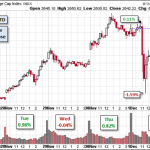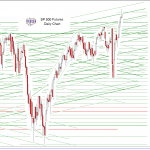When is the absolute worst time to take a hit to your retirement savings?Almost by definition, it has to be after you’ve retired. If it happened before you were planning to retire, you would have the option to postpone your retirement date, giving yourself additional time to add to your retirement savings.But that’s not something you can do after you’ve retired. Certainly not easily. After you’ve retired, you can reasonably expect your working days are behind you.So when after you’ve retired would be the the worst possible time to experience a sudden decline in the value of your retirement savings?That question was answered by Schwab’s investment analysts, who compared two specific scenarios. In the first scenario, an individual who retired experienced a negative 15% annual reduction in the value of their retirement accounts over a two year period, starting immediately after retiring. The second scenario considered the impact an identical reduction would have if it occurred some ten years into retirement, when presumably the retiree would have no real option to rejoin the ranks of the employed.They created the following chart to visualize the relative impact of this hypothetical event: Here are the assumptions behind the visual analysis:
Here are the assumptions behind the visual analysis:
The chart confirms the worst case scenario is the one when misfortune hits at the very beginning. A financial calamity that strikes then has the capability to permanently reduce your retirement nest egg, making it likely it will run out of funds while you’re still alive.Assuming you make no changes to how much you withdraw each year. Schwab’s analysts explain why getting hit early in retirement can be so damaging:
At issue here is a phenomenon known as sequence-of-returns risk. “Sequence” refers to the fact that the order and timing of poor investment returns can have a big impact on how long your retirement savings last.
After all, a retirement portfolio generally isn’t just a lump of cash in a savings account that you draw inexorably down to zero. It also includes a mix of investments that can provide both income and growth over time. Ideally, the growth will replenish at least a portion of what you take out, making your withdrawals more sustainable over the length of the retirement you’ve envisioned.
However, a major drop in the early years of retirement can scramble this picture. When you tap into your portfolio as it’s losing value, you have to sell more investments to raise a set amount of cash. Not only does that drain your savings more quickly, but it also leaves you with fewer assets that can generate growth and returns during potential future recoveries.
In contrast, if a decline occurs later in your retirement, you may not need your portfolio to last as long or continue growing to fund a long retirement, so you may be in much better shape to fund withdrawals.
More By This Author:Climbing Limo GDP Forecast For 2024-Q3New Home Affordability Crisis Enters 29th MonthS&P 500 Sees Little Change Despite Blowout U.S. Jobs Data








Leave A Comment